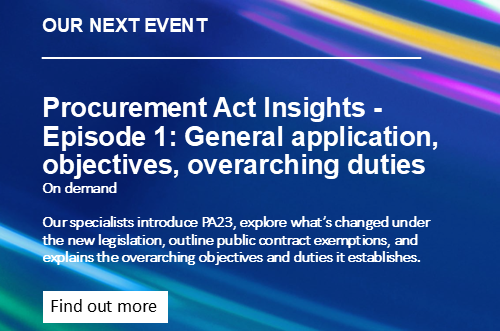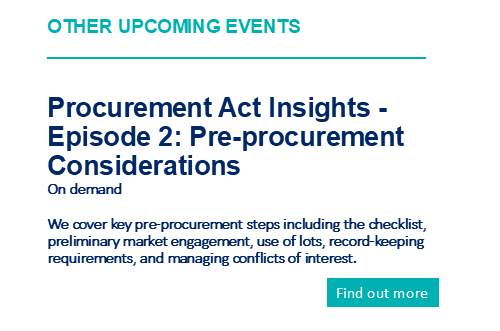- Details
Sleeved Power Purchase Agreements
In the latest in a series on the different types of power purchase agreements available for local authorities to consider when procuring electricity, Steve Gummer and Tom Knox provide a bitesize snapshot of ‘Sleeved Power Purchase Agreements’ (“Sleeved PPAs”) and why local authorities should consider using them. They also provide a summary of the legal issues that local authorities will need to consider.
What are Sleeved PPAs and how do they work?
Although Sleeved PPAs can be relatively complex arrangements, they offer a robust solution for local government to secure renewable energy, and have been utilised by local authorities for years, such as in the CCS Supply of Energy Framework, which allows for organisations to contract with licensed suppliers for these types of contracts.
In essence, Sleeved PPAs are off-site PPAs where a licensed supplier acts as an intermediary between a generator and an offtaker (or consumer) to deliver electricity.
Sleeved PPAs are agreements where an offtaker agrees to purchase electricity directly from a renewable energy generator under a PPA (PPA 1 shown in the diagram below). Instead of the energy being delivered directly to the offtaker, the electricity purchased by the offtaker under PPA 1 is then sold by the offtaker to a licensed supplier at the point of distribution on the National Grid under a second PPA (PPA 2 shown in the diagram below).
In a Sleeved PPA, PPA 1 is backed off against PPA 2 in order to mitigate against any risk to the offtaker. The offtaker and the licensed supplier then enter into a separate supply agreement. The supply agreement contains sleeving arrangement terms, whereby the licensed supplier acts as an intermediary company (often an energy supplier or a utility) to ‘sleeve’ the power through the grid to the offtaker.
Sleeved PPA diagram:

Why should local authorities consider the use of Sleeved PPAs?
One of the main benefits of a Sleeved PPA is that it provides price certainty to both sides of the arrangement, and in most cases provides local authorities with a reduced electricity price, protecting local authorities from energy market fluctuations.
Some additional benefits that local authorities should consider when determining whether to enter into Sleeved PPAs include:
- Shift in risks – the licensed supplier as the intermediary handles market complexities such as grid balancing and regulatory compliance, which reduces the risk and administrative burden on the local authority. This provides a more streamlined approach to accessing renewable energy.
- The ‘expertise’ of the sleeve – this model allows a local authority to more effectively integrate renewable energy into their energy portfolio, by leveraging the expertise of the licensed supplier. This therefore creates a much more efficient solution in order for local authorities to meet their sustainability goals.
- Length of term – Sleeved PPAs generally tend to be longer term contracts, often for a period of 15 years or more, giving energy security and certainty to offtakers.
- Increased trust and collaboration – in Sleeved PPAs, the relationship between offtakers and generators often becomes more established due to the direct contractual relationship which occurs.
- Renewable Energy Certification – through the Sleeved PPA model, there may be provisions under PPA 1 to allow the offtaker to assume any REGOs or additional benefits from the generator.
Legal Considerations
Licensed supplier involvement in Sleeved PPAs and the two back-to-back contracts for the sale of power increases the complexity of the negotiation process. Depending on the outcome of such negotiation and subsequent amendments to the contract suite, there will be less flexibility in using Sleeved PPAs compared to other PPA models, which may cause issues where prices need to be adjusted over time. This model also reduces the flexibility to change suppliers.
Sleeved PPAs also come with a balancing risk, where the generator and offtaker are, to some extent, reliant on each other for consistent generation and consumption. When a generator over-generates or under-generates electricity, and the offtaker consumes above or below the ‘volume tolerance’, this may lead to either or both the generator and offtaker becoming liable for penalty payments under the PPAs or supply agreement.
Steve Gummer is a Partner and Tom Knox is an Associate at Sharpe Pritchard LLP.
For further insight and resources on local government legal issues from Sharpe Pritchard, please visit the SharpeEdge page by clicking on the banner below.
This video is for general awareness only and does not constitute legal or professional advice. The law may have changed since this page was first published. If you would like further advice and assistance in relation to any issue raised in this article, please contact us by telephone or email
|
Click here to view our archived articles or search below.
|
|
ABOUT SHARPE PRITCHARD
We are a national firm of public law specialists, serving local authorities, other public sector organisations and registered social landlords, as well as commercial clients and the third sector. Our team advises on a wide range of public law matters, spanning electoral law, procurement, construction, infrastructure, data protection and information law, planning and dispute resolution, to name a few key specialisms. All public sector organisations have a route to instruct us through the various frameworks we are appointed to. To find out more about our services, please click here.
|
|
OUR RECENT ARTICLES
December 10, 2025
Sharpe Pritchard appointed to £60m London Boroughs’ Legal Alliance frameworkSharpe Pritchard, one of the UK’s leading public law firms, has been re-appointed to the London Boroughs’ Legal Alliance (LBLA) Solicitors Panel.
November 20, 2025
Strengthening the standards and conduct framework for local authorities in EnglandJames Berry offers his insight into how the proposed changes to standards and conduct rules will affect local authorities.
November 04, 2025
Procuring and operating open frameworks under the Procurement Act 2023Chantelle Pink offers advice to authorities on open frameworks and how to procure them.
October 31, 2025
Building Solar – 5 Top Tips for Solar Farm Construction ContractsSolar farm construction contracts are in focus following fascinating insights into the continuing global uptake and expansion of renewables, and particularly solar, within the 2025 mid-year report of Ember, a global energy think tank.
|
|
OUR KEY LOCAL GOVERNMENT CONTACTS
|
||
|
Partner 020 7406 4600 Find out more |
||
|
Partner 020 7406 4600 Find out more |
||
|
Rachel Murray-Smith Partner 020 7406 4600 Find out more |







 Catherine Newman
Catherine Newman
